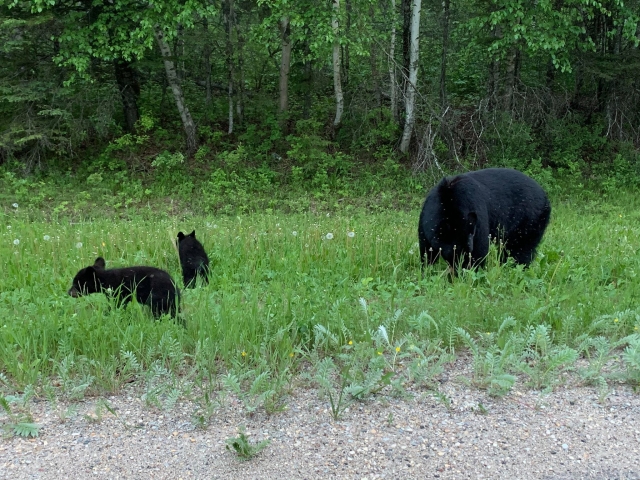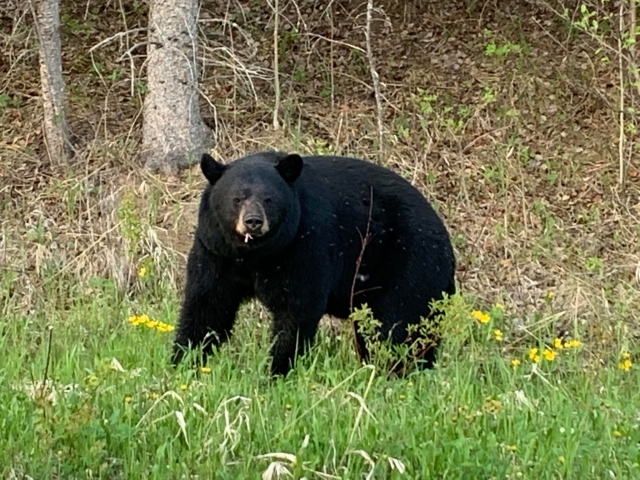If you’ve driven through Riding Mountain National Park within the last couple months, you’ve probably seen some bear activity.
Doug Bergeson, a wildlife biologist at RMNP, says in the early spring and summer, bears get attracted to the ditches because of the grass and dandelions.
“We had a very good crop of berries last summer and fall, so I think the population is probably at the higher end, so we had lots of cubs born this spring and people are seeing quite a few bears around.”
Bergeson says there’s a good population of bears in the park.
“We think there’s somewhere between the neighbourhood of 800 and a thousand bears in the park, likely at the higher end. Like I said, due to high berry crops the last couple years and seems to be good reproduction in the black bears.”

Bergeson says bears have a short time to put on a lot of weight when they come out of hibernation. Throughout the summer bears are eating machines, eating grass, dandelions, Saskatoon berries, raspberries, chokecherries, and then in the fall, the bears move to the east side of the park and eat a lot of acorns.
Bergeson acknowledges that lots of people go to Riding Mountain to see the bears, but says they’d prefer people don’t stop alongside the road to see the bears and says to drive slow, put your hazards on and keep moving instead.
“If they do stop, people, we want them to pull over a safe distance off the road in a safe area, not on a corner or a hill, put their hazards on the vehicle, stay in the vehicle, do not get out of the vehicle, view the bear at a safe distance, and of course, absolutely never provide any foodstuff for the bears, or garbage out of your window, never.”
He also says to watch out for bears crossing the road to meet up with the rest of their family.
If you decide to go out on the trails in the park, Bergeson says to be aware and educate yourself that you are in bear country, travel in groups, make noise, keep dogs on a leash, carry and know how to use bear spray, and be aware of your surroundings. If you come across a bear, Bergeson recommends giving it lots of room, slowly get out of the way and back up, and to avoid it if at all possible.
Manitoba Conservation and Climate, is also recording a higher than usual number of black bear interaction calls around the province. They say one of the most common causes of bear-human conflict is the presence of bird feeders. Birdseed can attract bears as well as birds, and with other food sources plentiful for birds in the summer months, the province asks people to put feeders away until later in the fall.







